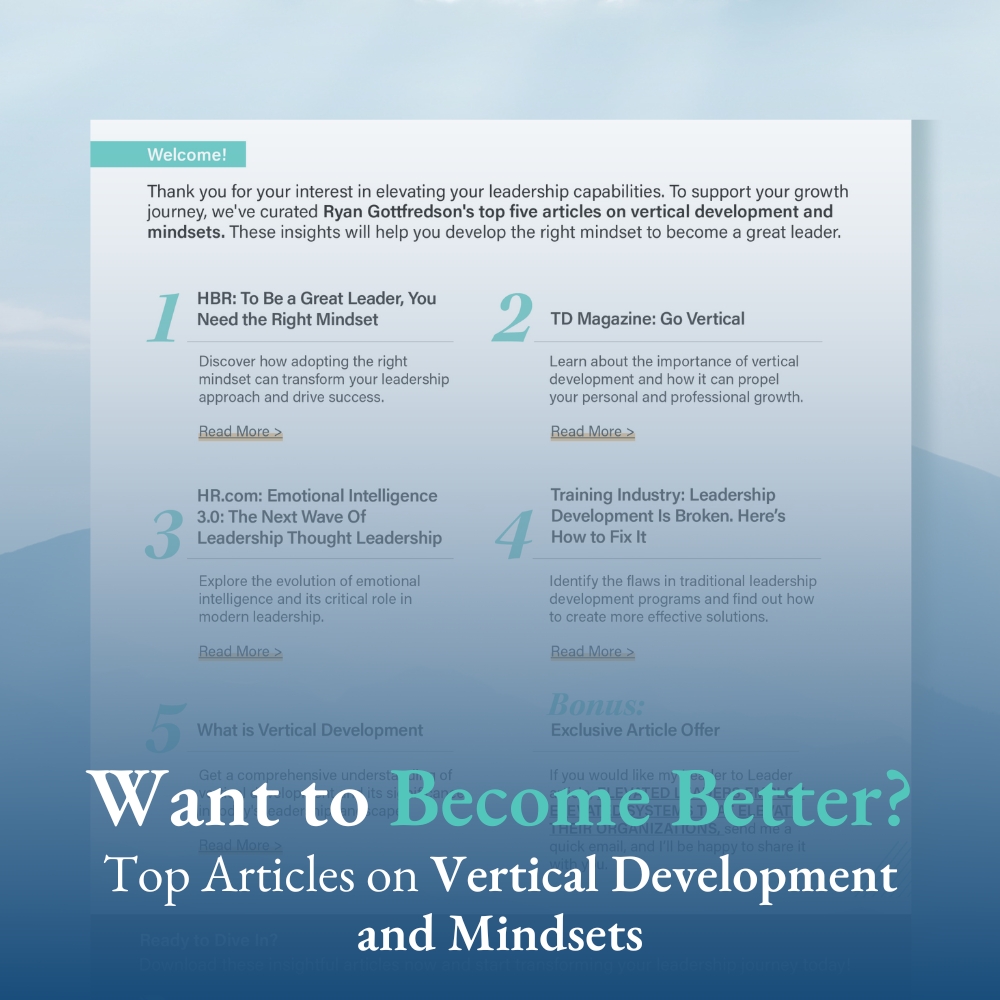Background
A health technology company, operating in the complex healthcare industry with 1,500 employees, faced growing pains at the executive level. As one of nine businesses managed under a larger umbrella company, they were under constant pressure to deliver double-digit growth year-over-year. However, beneath the surface, their executive team was struggling. High turnover and a siloed, results-driven culture were preventing them from operating effectively as a team.
When I was brought in to work with the executive team, they were in transition, with many new members stepping into leadership roles. They recognized that something wasn’t working, but they weren’t exactly sure what the root of the issue was or how to address it. My role was to assess the team’s leadership sophistication and identify key areas for development.
Initial Assessment
To gain a deeper understanding of the team’s dynamics, I conducted one-on-one calls with each executive, had them complete my Personal Mindset Assessment, and facilitated an Elevated Leadership Workshop. Through these activities, I quickly identified that the team was operating at a Mind 2.0 level of leadership, characterized by:
- An intense results focus – The team measured success almost exclusively by their ability to hit numbers, often at the expense of broader organizational priorities.
- Individual performance silos – Each executive was primarily concerned with their personal metrics, leading to a competitive rather than collaborative culture.
- Top-down, authoritative leadership – Leaders struggled with delegation, and their direct reports were not taking initiative. This resulted in constant problem escalation, leaving the executive team firefighting rather than focusing on strategic priorities.
The root of these challenges stemmed from three key factors:
- The umbrella company’s incentives – The intense focus on financial performance reinforced the results-first mindset.
- Individual leadership gaps – Each executive was competent but lacked the leadership sophistication needed to operate at a higher level.
- The CEO’s focus – While highly capable, the CEO’s emphasis on numbers overshadowed the need to establish a strong leadership foundation, foster teamwork, and build a strategic operating rhythm.
The Transformation Process
Over the next 18 months, we worked in three phases to elevate the executive team:
Phase 1: Awakening to Elevated Leadership
I facilitated a series of workshops designed to shift their perspective on leadership. A major breakthrough occurred when they realized that, while they were being incentivized to hit results, an exclusive team with a primary focus on results was not the most effective way to lead their organization. They began to see that sustainable success required balancing performance with purpose, culture, and strategy.
One pivotal moment came after an early workshop when the COO approached me with an insight. She had just held an all-company meeting where she spent the entire time discussing performance metrics and results—without once mentioning purpose. Recognizing this oversight, she began shifting her approach, ensuring that future communications integrated both results and a broader vision for the company.
Phase 2: One-on-One Leadership Development
I engaged in individual coaching sessions with each executive team member to help them identify mental blocks and self-protective mindsets that were keeping them trapped in a Mind 2.0 level of leadership. Through tailored coaching, we worked on shifting their mindsets, enabling them to step into Mind 3.0 leadership, which emphasizes greater collaboration, adaptability, and long-term strategic thinking.
One of the biggest challenges during this phase was making time for development. Given their results-driven culture, many executives found it difficult to prioritize leadership growth. However, through consistent reinforcement and the realization that elevating their leadership would drive better results, they gradually embraced the process.
Phase 3: Establishing a Strong Leadership Foundation
With individual leadership development underway, we turned our focus to establishing a solid leadership foundation that would enable the executive team to operate effectively at a higher level. Together, we worked to:
- Define a clear, inspirational, and stakeholder-centric purpose
- Establish dilemma-resolving values to guide decision-making
- Create a healthy accountability culture, shifting from top-down authority to shared responsibility and empowerment
This foundation transformed how the executive team functioned. Instead of reacting to problems and fighting fires, they began leading with purpose, intentionality, and strategic focus.
Results & Impact
The most significant shift came in the company’s culture. By embracing a stronger leadership foundation, the executive team evolved from being a group of independent leaders to a cohesive, high-functioning team. This transformation allowed them to:
- Lead more effectively at the executive level rather than getting pulled into operational issues
- Foster a culture of purpose, collaboration, and accountability
- Make strategic decisions that balanced financial performance with long-term sustainability
The CEO and executive team members reported that they finally felt like they were operating on all cylinders—more secure, wise, and sophisticated in their leadership.
Lessons Learned
This case exemplifies the power of elevated leadership. While a results-driven approach can drive short-term success, it ultimately limits an organization’s potential if not balanced with strong leadership, teamwork, and strategic thinking. By shifting their focus, this executive team unlocked their ability to lead with clarity, collaboration, and long-term vision, positioning the company for sustained success.
This transformation is a testament to the impact of vertical leadership development. When executives shift from a transactional approach to one rooted in purpose and strategic leadership, they create not just stronger teams—but stronger, more sustainable organizations.










